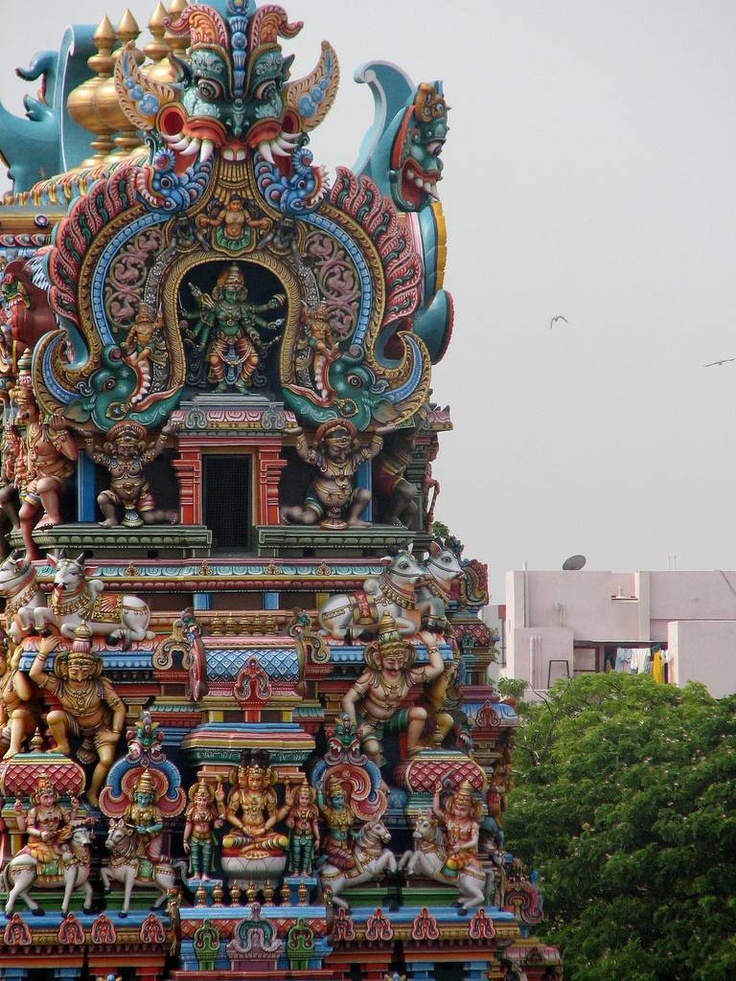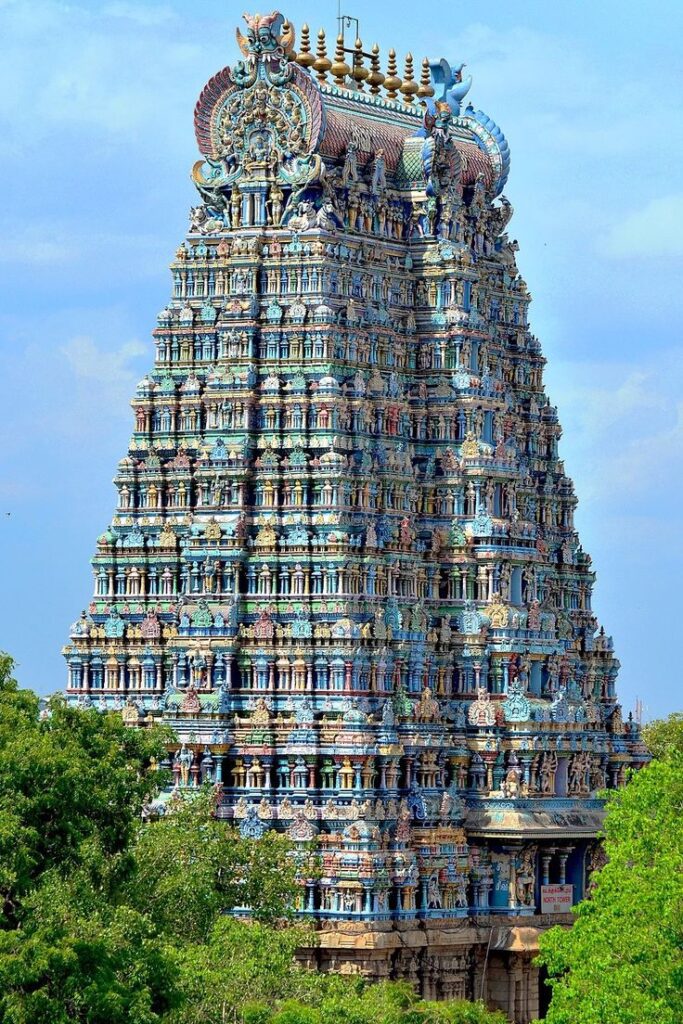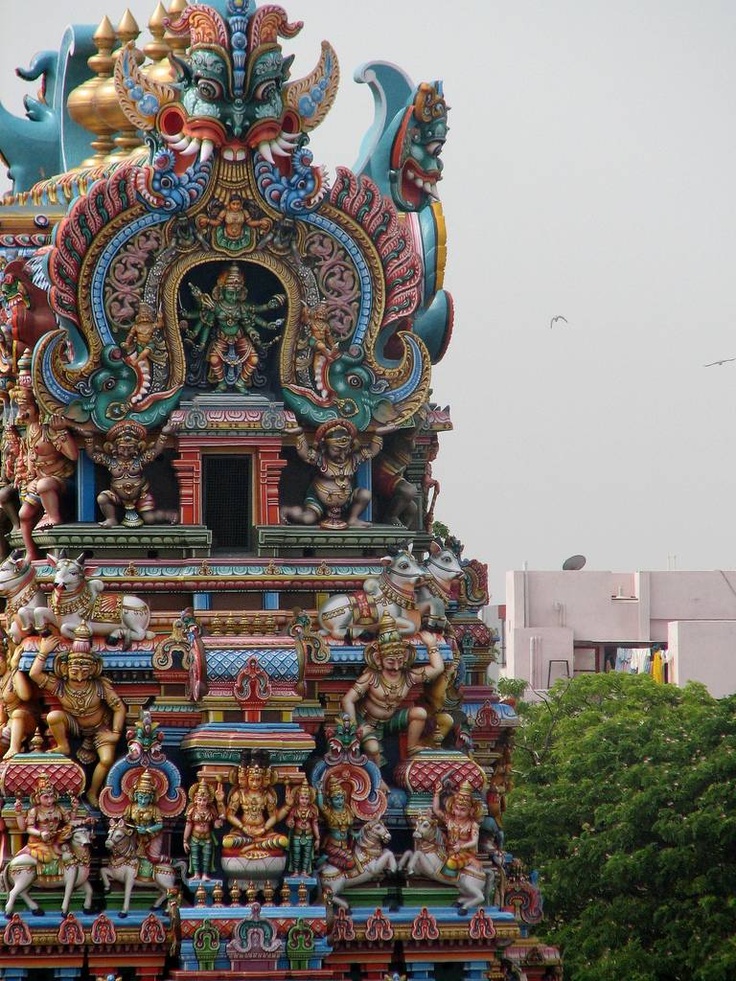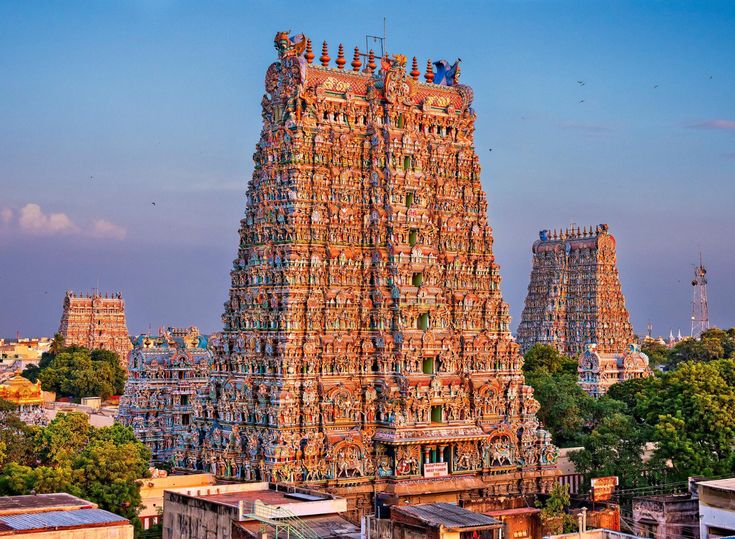
Meenakshi Amman Temple in Madurai
Nestled in the heart of the ancient city of Madurai, the Meenakshi Amman Temple stands as a timeless testament to South Indian temple architecture and spiritual devotion. This majestic structure, dedicated to Goddess Meenakshi and Lord Sundareswarar (a form of Shiva), draws millions of devotees and tourists from across the globe. In this comprehensive guide, we’ll delve into the history, architecture, festivals, and practical travel tips to make your visit to Meenakshi Amman Temple an unforgettable experience.
Meenakshi Amman Temple History in English
The history of the Meenakshi Amman Temple is as fascinating as its architecture. The temple’s origins can be traced back to the 6th century, during the time of the Pandya dynasty. However, the present structure, which we admire today, owes much of its grandeur to the contributions of the Nayak rulers in the 16th century. King Tirumalai Nayak, in particular, played a pivotal role in expanding and embellishing the temple complex.
The temple is mentioned in the ancient Tamil literary work “Silappatikaram,” which speaks of its significance even during early historical times. The early structures were modest, but the temple gradually evolved into a grandiose architectural marvel due to successive additions and renovations by various rulers.
When was Meenakshi Amman Temple Built?
The exact date of the temple’s initial construction is not definitively known. However, historical records suggest that the original temple existed as early as the 6th century. The most significant phase of construction occurred between the 12th and 17th centuries, with substantial contributions from the Nayak dynasty, especially during the reign of King Tirumalai Nayak in the 17th century.
The temple’s development can be seen as a layered history, with each phase adding more grandeur and architectural complexity. The 17th century saw the construction of the iconic gopurams (gateway towers) and the intricate pillared halls that make the temple a marvel of Dravidian architecture.
Meenakshi Amman Temple Architecture

The Meenakshi Amman Temple is renowned for its breathtaking Dravidian architecture. The temple complex covers approximately 14 acres and houses 14 majestic gopurams. The tallest of these towers, the southern tower, rises to a height of 170 feet, adorned with intricate carvings and vibrant sculptures depicting various deities, mythological figures, and scenes from Hindu epics.
Key Architectural Features
- Gopurams (Gateway Towers): The temple’s gopurams are its most striking feature. Each tower is covered with thousands of colorful sculptures of gods, goddesses, demons, and mythical animals. These sculptures are not only decorative but also narrate various mythological stories.
- Mandapams (Pillared Halls): The temple complex includes several mandapams, each with its unique architectural and artistic significance. The Hall of Thousand Pillars (Aayiram Kaal Mandapam) is a must-visit, with each pillar uniquely carved and showcasing the craftsmanship of ancient artisans.
- Vimanams (Sanctum Towers): The central sanctum houses the idols of Meenakshi and Sundareswarar, with the sanctum sanctorum (garbhagriha) being a dark, serene space designed to evoke a sense of divine presence. The vimanams above the sanctum are elaborately decorated and add to the temple’s grandeur.
- Sacred Tanks: The temple has a sacred pond called the Porthamarai Kulam, meaning “Pond with the Golden Lotus.” This pond is believed to be where Indra, the king of gods, performed penance.
Where is Meenakshi Amman Temple Located?

The Meenakshi Amman Temple is located in the vibrant city of Madurai, in the southern Indian state of Tamil Nadu. Madurai, often referred to as the “Athens of the East,” is a city steeped in history and culture, with the temple being its most iconic landmark.
Madurai is situated on the banks of the River Vaigai and has been a major settlement for more than two millennia. The city is well-connected by road, rail, and air, making it easily accessible for pilgrims and tourists alike.
Meenakshi Amman Temple Festivals 2024
One of the most vibrant and significant festivals celebrated at the Meenakshi Amman Temple is the Meenakshi Thirukalyanam, also known as the Chithirai Festival. Scheduled for April 2024, this grand event marks the celestial wedding of Goddess Meenakshi and Lord Sundareswarar. The festival is a visual and spiritual feast, attracting pilgrims and tourists who partake in the various rituals, processions, and cultural performances.
Other Important Festivals
- Navaratri: This nine-day festival celebrates the divine feminine and includes special poojas, cultural programs, and processions.
- Aadi: Celebrated in the Tamil month of Aadi (July-August), this festival involves special prayers and rituals dedicated to Goddess Meenakshi.
- Pongal: This harvest festival, celebrated in January, includes special prayers and offerings to thank the deities for a bountiful harvest.
Meenakshi Amman Temple Timings
The Meenakshi Amman Temple is open to devotees and visitors every day of the week. The general timings are as follows:
- Morning: 5:00 AM to 12:30 PM
- Evening: 4:00 PM to 10:00 PM
Please note that these timings may vary during festivals and special occasions, so it’s advisable to check the schedule beforehand.
Meenakshi Amman Temple Dress Code
To maintain the sanctity and decorum of the temple, visitors are expected to adhere to a modest dress code. Men are required to wear dhotis or trousers and a shirt, while women should wear sarees or salwar kameez. Shorts, skirts, and sleeveless tops are not permitted inside the temple premises.
Meenakshi Temple Travel Tips
- Plan Ahead: Research the temple timings, festivals, and any special events before planning your visit to avoid any inconvenience.
- Respect the Dress Code: Ensure you follow the dress code to gain entry without any issues.
- Stay Hydrated: Madurai can get quite hot, so carry water to stay hydrated during your visit.
- Guided Tours: Consider hiring a local guide to enhance your understanding of the temple’s history, architecture, and significance.
- Footwear: Footwear is not allowed inside the temple, so be prepared to walk barefoot.
- Photography: Photography is restricted in certain areas of the temple, so be mindful of signs and guidelines.
- Local Cuisine: Don’t miss out on trying the local cuisine. Madurai is famous for its South Indian delicacies.
How to Reach Meenakshi Temple?
By Air: The nearest airport is Madurai International Airport, located about 12 kilometers from the city center. It is well-connected to major Indian cities and a few international destinations.
By Train: Madurai Junction is a major railway station, with frequent trains from Chennai, Bangalore, Mumbai, and other cities. The temple is about 2 kilometers from the railway station.
By Road: Madurai is well-connected by road, with regular bus services from Chennai, Trichy, Coimbatore, and other nearby cities. You can also hire taxis or use ride-sharing services for a more comfortable journey.
Meenakshi Amman Temple Images






Conclusion
The Meenakshi Amman Temple in Madurai is not just a place of worship; it is a cultural and architectural treasure that stands as a symbol of Tamil Nadu’s rich heritage. Whether you are a devotee seeking spiritual solace or a traveler eager to explore the marvels of ancient Indian architecture, the temple offers an experience that is both enriching and awe-inspiring. Plan your visit, immerse yourself in its divine aura, and let the grandeur of the Meenakshi Amman Temple leave an indelible mark on your soul.


Leave a Reply